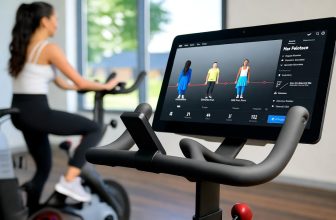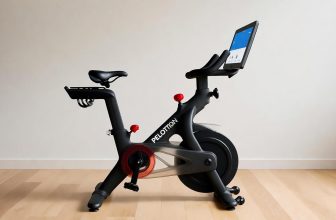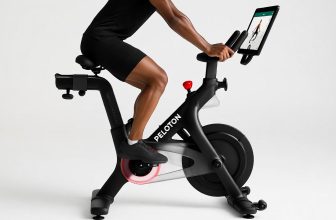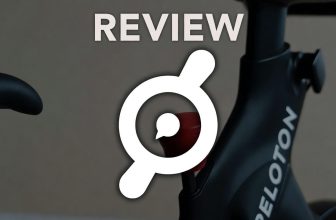Table of Contents
- How to Buy a Treadmill for Home Use?
- Define Your Fitness Goals
- Set a Realistic Budget
- Budget Breakdown
- Measure Your Space
- Space Considerations
- Prioritize Key Features
- Motor Power
- Belt Size and Cushioning
- Incline and Decline
- Additional Features
- Research and Compare Models
- Top Picks for 2025
- Consider Maintenance and Longevity
- FAQ
- What is the best treadmill for home use?
- How much should I spend on a treadmill?
- Can I use a treadmill in a small apartment?
- What motor power do I need?
- Are subscription services worth it?
- Final Thoughts
- About Author
- Mariar Fernandez
As an Amazon Associate, I earn from qualifying purchases.
How to Buy a Treadmill for Home Use?
How to Buy a Treadmill for Home Use? To buy a treadmill for home use, define your fitness goals, set a budget, measure your space, and prioritize features like motor power (2.5–3.5 CHP for runners), belt size (20”x55” minimum for running), cushioning, and incline options. Research reputable brands, read reviews, and test models in-store if possible.
Define Your Fitness Goals
How to Buy a Treadmill for Home Use? Understanding your fitness objectives is the first step in choosing the right treadmill. Are you walking for heart health, jogging for weight loss, or training for a marathon? Your goals determine the treadmill’s required features. For instance, walkers need less motor power (1.5–2.0 CHP), while runners require at least 2.5–3.5 CHP for sustained performance. According to the American Heart Association, 150 minutes of moderate aerobic activity weekly improves cardiovascular health, making a treadmill a convenient tool for consistency. Consider:
- Usage Frequency: Daily runners need durable models with strong motors and warranties.
- Fitness Level: Beginners may prioritize basic models with gradual speed settings, while advanced users need incline options up to 15% for intense workouts.
- Multiple Users: Households with multiple users should opt for treadmills with higher weight capacities (300+ pounds) and versatile programming.
Set a Realistic Budget
Treadmill prices range from $300 to over $5,000, depending on features and quality. A 2025 Consumer Reports survey found that 65% of buyers spent between $500 and $2,000 for home use. Setting a budget narrows options and ensures value without overspending.
Budget Breakdown
| Price Range | Best For | Key Features | Examples |
|---|---|---|---|
| Under $500 | Casual walkers | Basic controls, limited incline, short warranties | SereneLife Folding Treadmill |
| $500–$1,500 | Walkers, light joggers | 2.0–2.5 CHP motor, foldable designs, Bluetooth | Horizon Fitness 7.0 AT |
| $1,500–$3,000 | Runners, serious walkers | 3.0+ CHP motor, iFIT integration, 12–15% incline | NordicTrack Commercial 1750 |
| Over $3,000 | Avid runners, multi-user households | 4.0+ CHP motor, large touchscreens, long warranties | Peloton Tread+ |
Tip: Look for sales during holidays like Black Friday or Memorial Day, when discounts can reach 20–50%, per TreadmillReviews.net. Avoid skimping on quality, as cheap models often have short warranties (90 days) and break down under heavy use.
For more on budgeting, check out Consumer Reports’ Treadmill Buying Guide for expert insights on balancing cost and quality.
Measure Your Space
Space constraints are critical when selecting a treadmill. Standard models measure 77”L x 35”W x 55”H, requiring at least 2 feet of clearance on each side and 6 feet behind for safety, according to TRI247. Folding treadmills save space, with folded dimensions as small as 25” x 32”.
Space Considerations
- Room Size: Measure length, width, and ceiling height. Incline settings raise the deck by 4–5 inches, so ensure 6 inches of clearance above the tallest user’s head.
- Folding vs. Non-Folding: Folding models suit small apartments, while non-folding treadmills offer sturdier frames for heavy use.
- Belt Size: Runners need belts at least 20”W x 55”L; walkers can use 17.5”W x 45”L. Taller users (over 6 feet) require 60”L belts for stride comfort.
Quote: “Measure twice, buy once. Knowing your space ensures your treadmill fits safely and functionally.” – Jenny Lucas-Hill, TRI247 Content Director.
Visit TRI247’s Treadmill Buying Guide for detailed space-planning tips.
Prioritize Key Features
The right features enhance performance and comfort. Focus on motor power, belt size, cushioning, and incline options to match your needs.
Motor Power
The motor drives treadmill performance. Continuous Horsepower (CHP) measures sustained power, unlike Peak Horsepower (PHP), which is less reliable. A 2025 TreadmillReviewGuru study recommends:
- 1.5–2.0 CHP: Walkers and light joggers.
- 2.5–3.5 CHP: Moderate runners and incline training.
- 3.5+ CHP: Serious runners, interval training, or multi-user households.
Belt Size and Cushioning
A larger belt (20”W x 55”L minimum for runners) ensures comfort, while cushioning reduces joint impact. Forbes Vetted notes that advanced cushioning systems, like those in the Sole Fitness F80, cut joint stress by up to 40% compared to outdoor running.
Incline and Decline
Incline options (0–15%) simulate hills, boosting calorie burn by 10–15% per 1% incline, per GymCrafter. Decline features (-3% to -5%) mimic downhill running but are rare. Motorized inclines are more convenient than manual adjustments.
Additional Features
- Connectivity: iFIT or Zwift integration offers interactive workouts but may require subscriptions ($39–$44/month).
- Safety: Look for safety keys and sturdy handrails, especially for beginners or seniors.
- Warranty: Opt for lifetime frame/motor warranties and at least 1–2 years on parts, per Consumer Reports.
Explore TreadmillReviewGuru’s Buying Guide for in-depth feature comparisons.
Research and Compare Models
Researching models ensures you find a reliable treadmill. Read customer reviews on sites like Amazon, where 70% of treadmill buyers check ratings before purchasing, per a 2025 Statista report. Compare features across brands like NordicTrack, Sole Fitness, and Peloton.
Top Picks for 2025
- NordicTrack Commercial 1750: Best overall for runners, with 3.5 CHP, 12% incline, and iFIT integration.
- Horizon Fitness 7.0 AT: Best under $1,000, with 3.0 CHP and Bluetooth connectivity.
- Sole Fitness F80: Ideal for walkers, with a 22”W belt and superior cushioning.
Tip: Test treadmills in-store to assess comfort, noise, and controls. If buying online, check return policies and warranty details.
For a curated list, see Forbes Vetted’s Best Treadmills for 2025.
Consider Maintenance and Longevity
Treadmills require regular maintenance to last. Budget models need frequent belt lubrication, while premium models often have self-lubricating belts. A 2025 Home Gym Magazine report states that high-quality treadmills with 2-ply belts and 2”+ rollers last 7–10 years with proper care.
- Maintenance Tips:
- Lubricate belts every 3–6 months (check manufacturer guidelines).
- Clean the deck and frame to prevent dust buildup.
- Inspect belts and rollers annually for wear.
Quote: “A treadmill’s longevity depends on quality and care. Invest in a sturdy model and maintain it regularly.” – Brian Boyce, TreadmillReviews.net.
Learn more about maintenance at Home Gym Magazine’s Treadmill Guide.
FAQ
What is the best treadmill for home use?
The NordicTrack Commercial 1750 is top-rated for its 3.5 CHP motor, 12% incline, and iFIT integration, ideal for runners and walkers.
How much should I spend on a treadmill?
Spend $500–$1,500 for casual use or $1,500–$3,000 for serious runners. Budget models under $500 often lack durability.
Can I use a treadmill in a small apartment?
Yes, choose a folding treadmill like the SereneLife Folding Treadmill, with compact folded dimensions (25” x 32”).
What motor power do I need?
Walkers need 1.5–2.0 CHP, joggers 2.5–3.0 CHP, and runners 3.0+ CHP for optimal performance.
Are subscription services worth it?
Subscriptions like iFIT ($39/month) add interactive workouts but aren’t essential if you prefer manual programs.
Final Thoughts
Choosing a treadmill for home use involves balancing fitness goals, budget, space, and features. Prioritize motor power, belt size, and cushioning for comfort and durability. Research trusted brands, read reviews, and test models to ensure a good fit. A quality treadmill, maintained properly, can support your fitness journey for years, delivering convenience and health benefits from the comfort of home.







